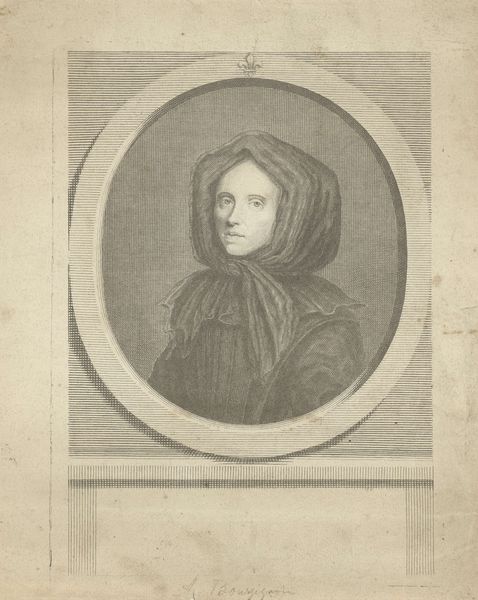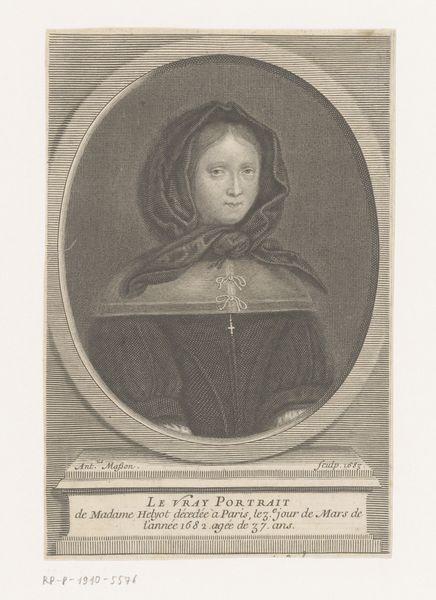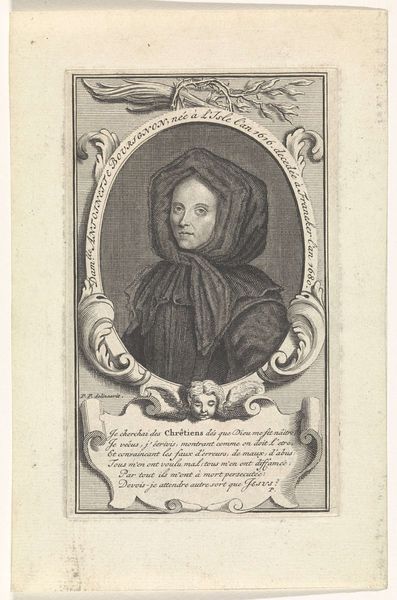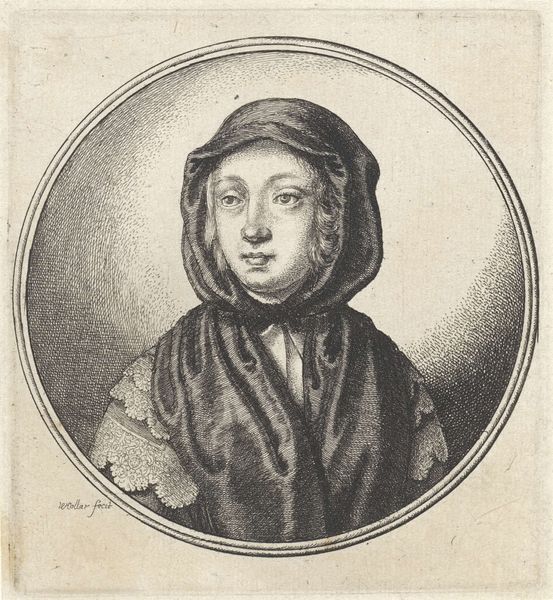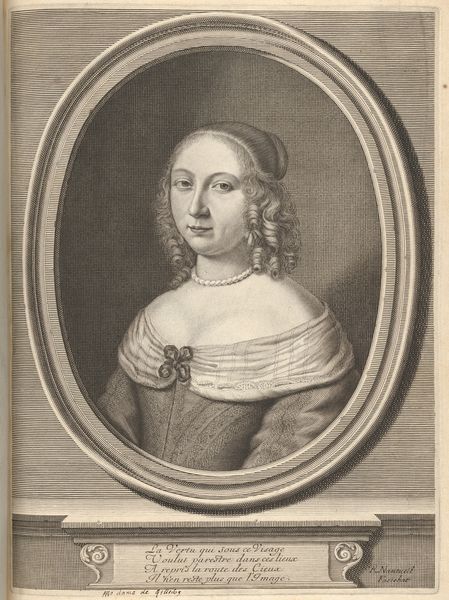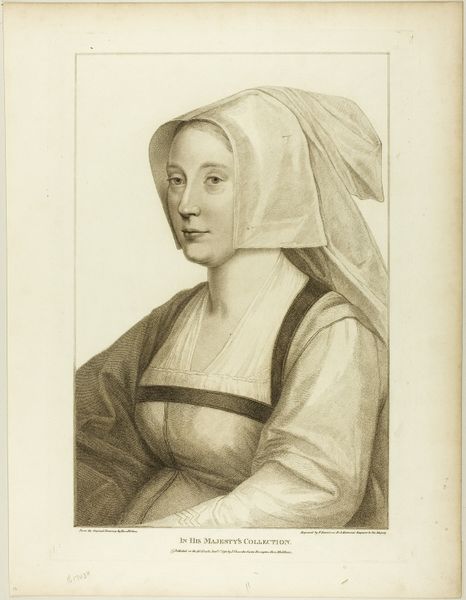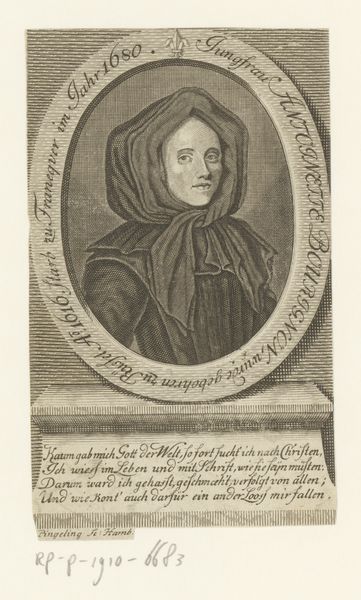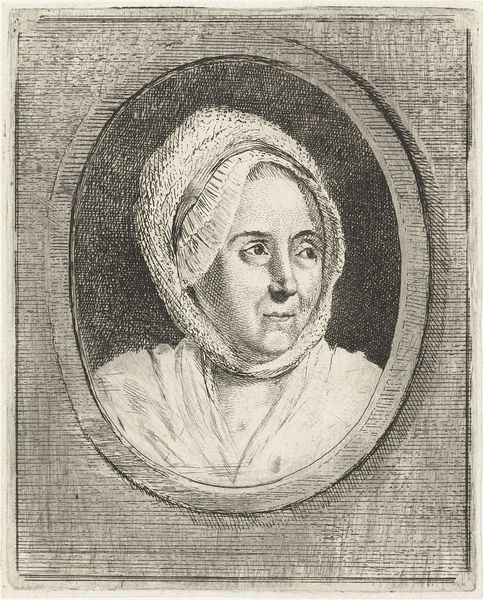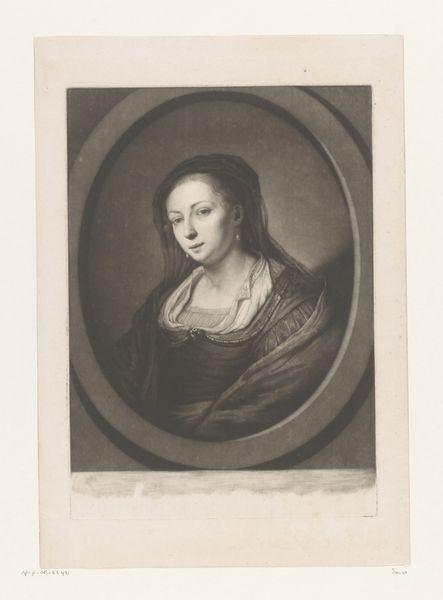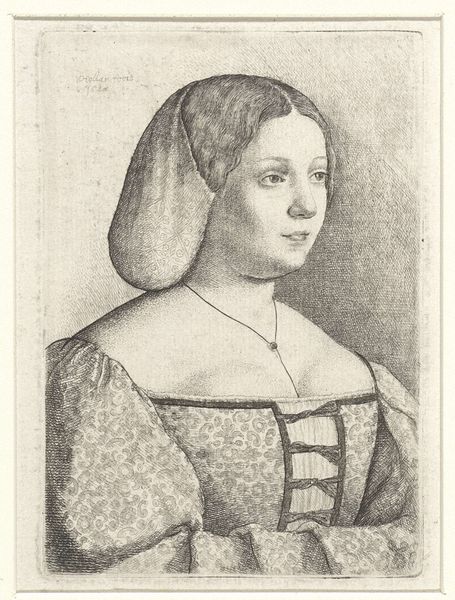
print, paper, engraving
#
portrait
#
baroque
#
dutch-golden-age
# print
#
figuration
#
paper
#
engraving
Dimensions: width 155 mm, height 213 mm
Copyright: Rijks Museum: Open Domain
Curator: Here we have Pieter van Gunst's portrait of Antoinette Bourignon. The artwork, executed between 1659 and 1731, employs the technique of engraving on paper, typical of the Dutch Golden Age's penchant for detailed figuration. What strikes you initially? Editor: The almost severe simplicity. It's a black and white print of a woman framed within an oval; she's dressed very modestly, and there is an arresting, intelligent gaze. The starkness certainly speaks of its era. Curator: Absolutely. Bourignon, though less known today, was quite a figure. This print, located at the Rijksmuseum, gives us insight into how a controversial intellectual was perceived. She advocated for a deeply personal and internal faith, outside established religious structures, which placed her at odds with many institutions of the time. Editor: The framing is particularly interesting. It feels almost like a visual representation of the constraints placed upon women, and thinkers, of that period. Do you see a connection between Bourignon's beliefs and her portrayal here? Curator: Undoubtedly. Printmaking allowed for broader dissemination of images. By creating and distributing this image, the artist and his patrons were participating in shaping, perhaps controlling, the narrative surrounding Bourignon. The formal qualities communicate the need for virtuous representation but at the same time capture her distinct features. Editor: The act of creating and distributing the image feels loaded. It brings to the fore questions around image ownership and historical representation of marginalized voices, doesn't it? How do we interpret the sitter's own agency? Did she have control over her image? Curator: Those are precisely the critical questions we should be asking. The circumstances around the print's production invite us to consider power dynamics and the socio-political undercurrents of image making in that historical moment. Editor: It’s fascinating how this seemingly simple portrait becomes a focal point for broader discussions about identity and control in 17th century Europe. Thank you. Curator: My pleasure, there are always new questions to ask.
Comments
No comments
Be the first to comment and join the conversation on the ultimate creative platform.
